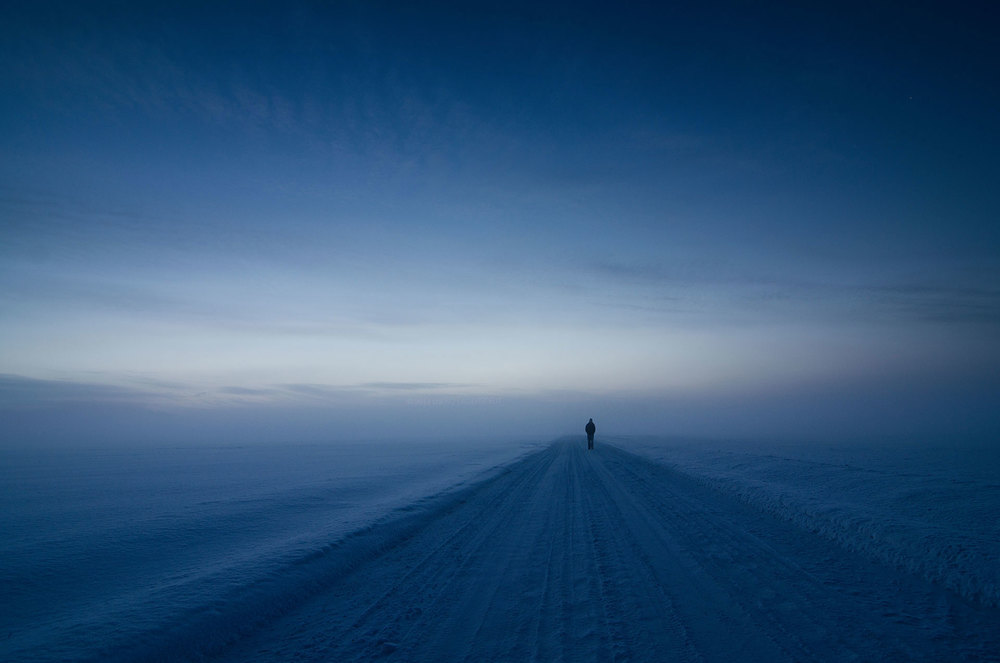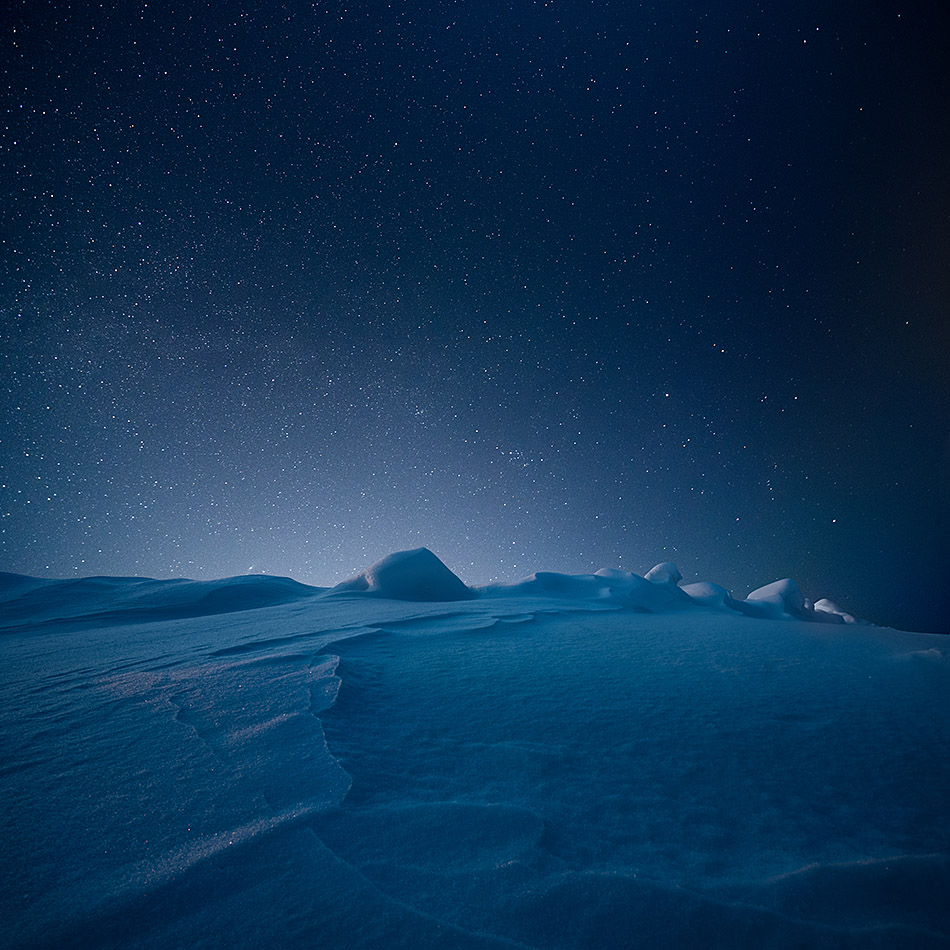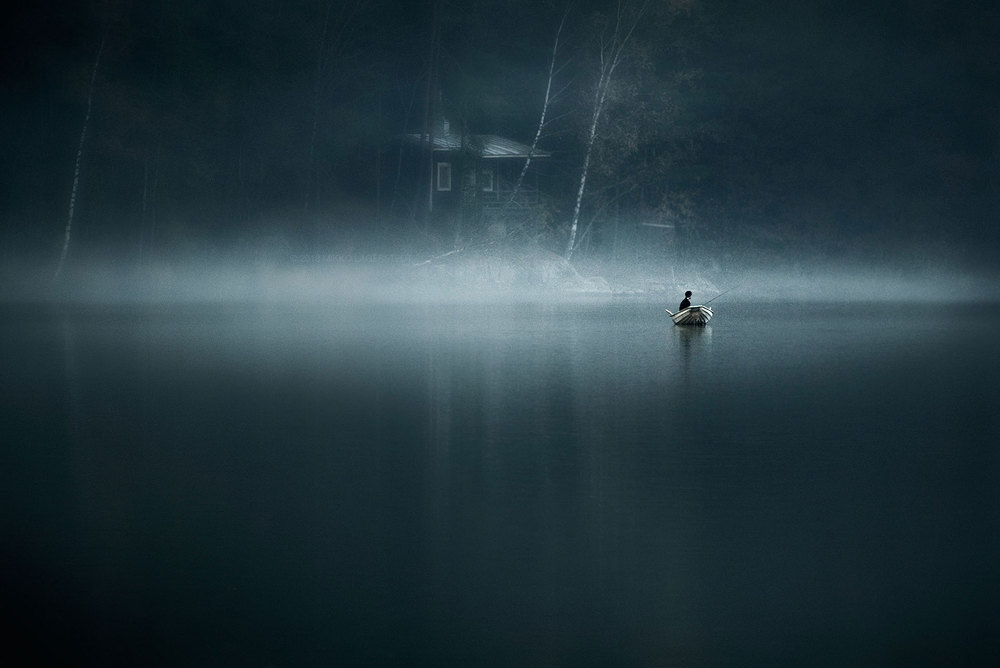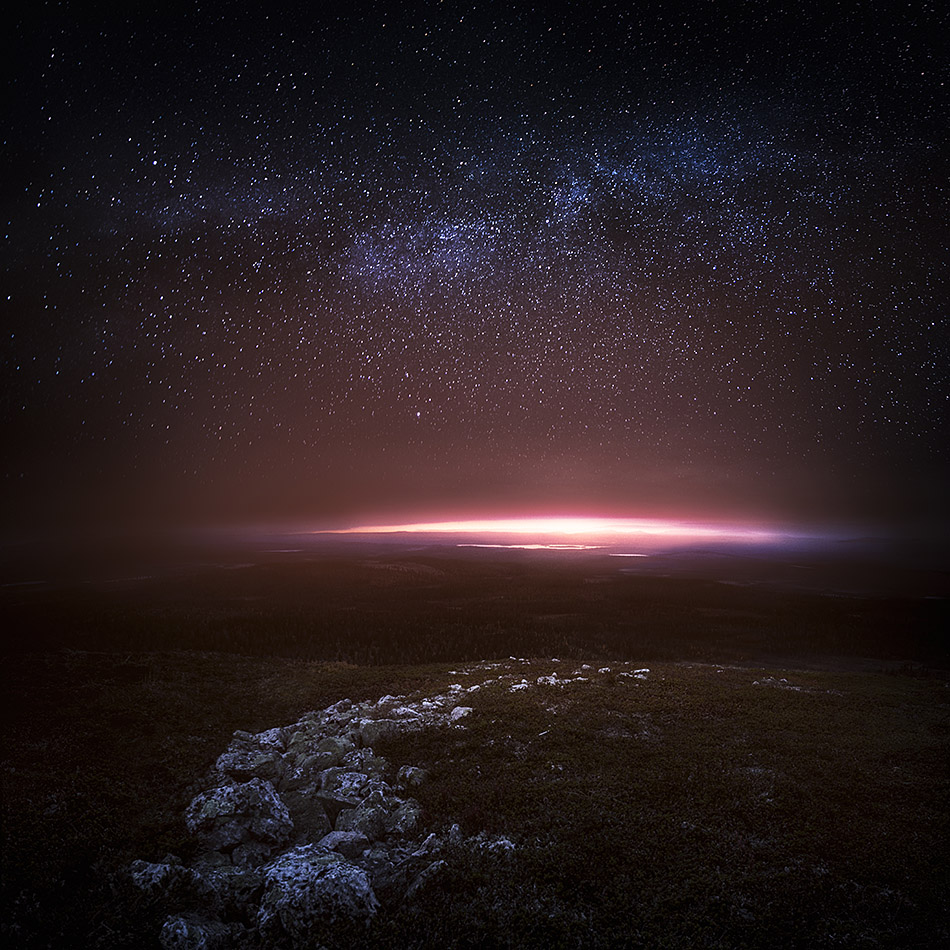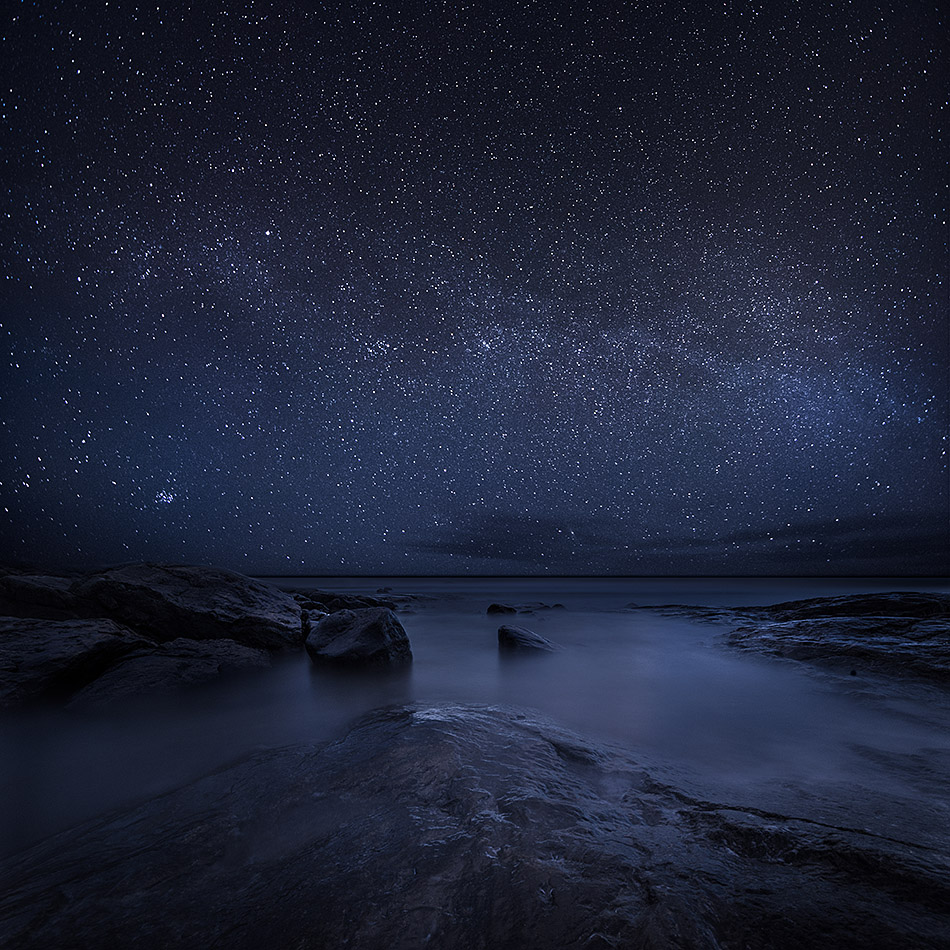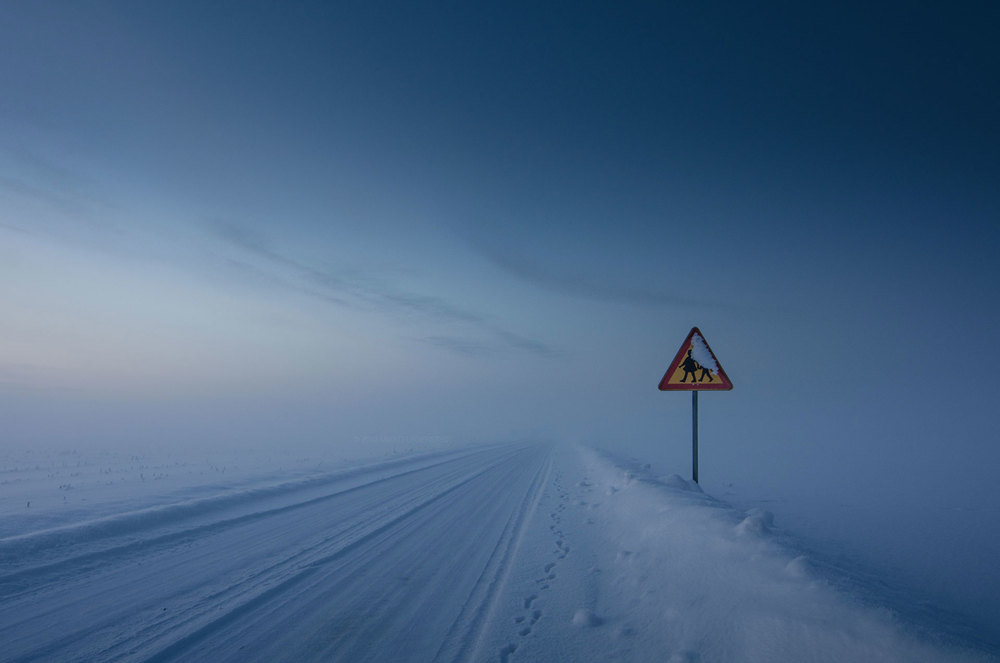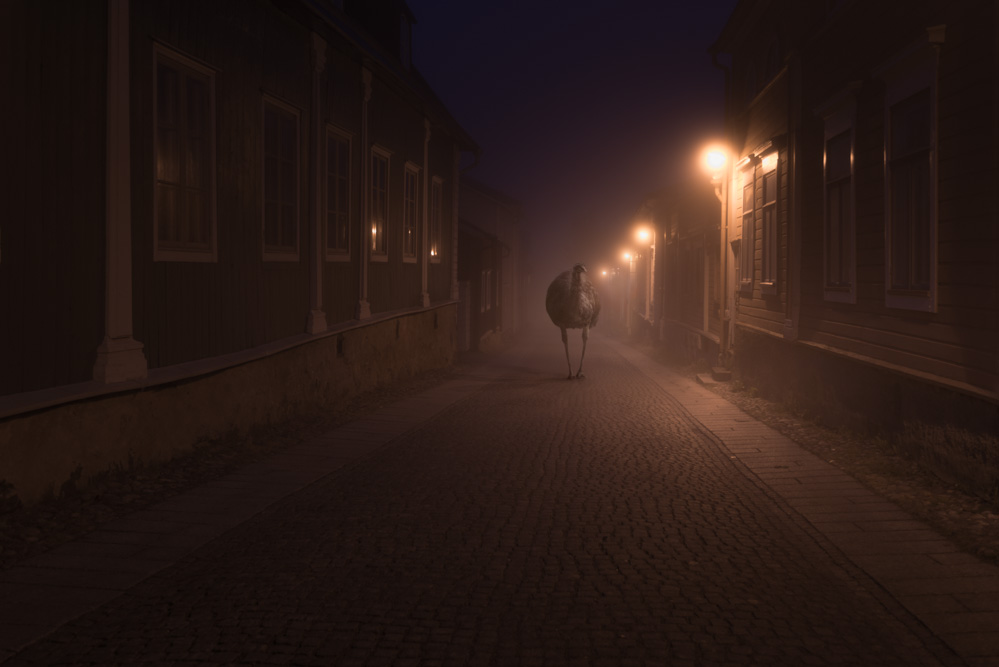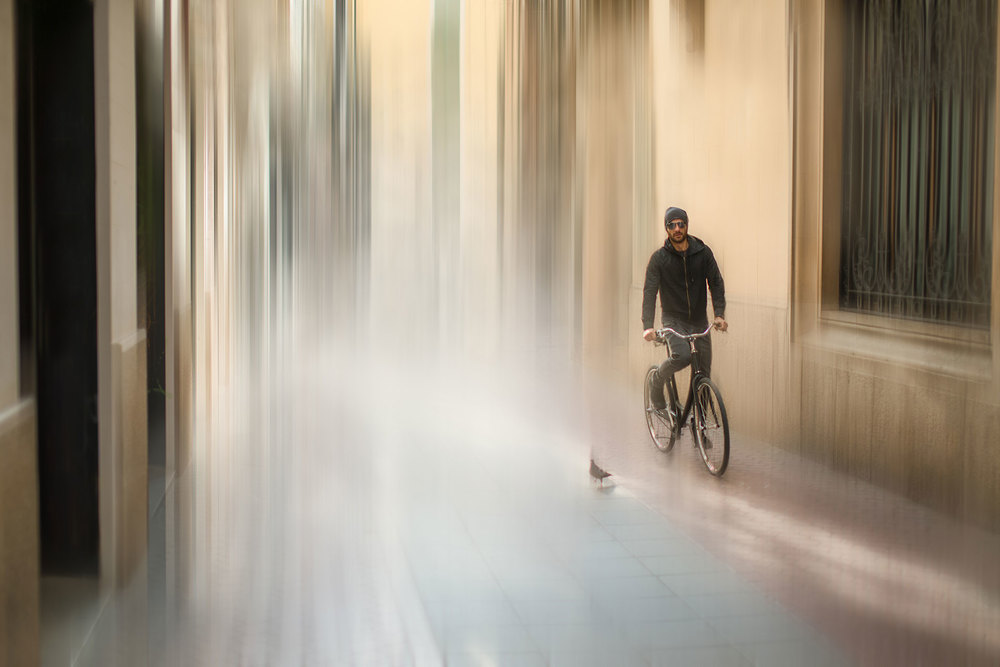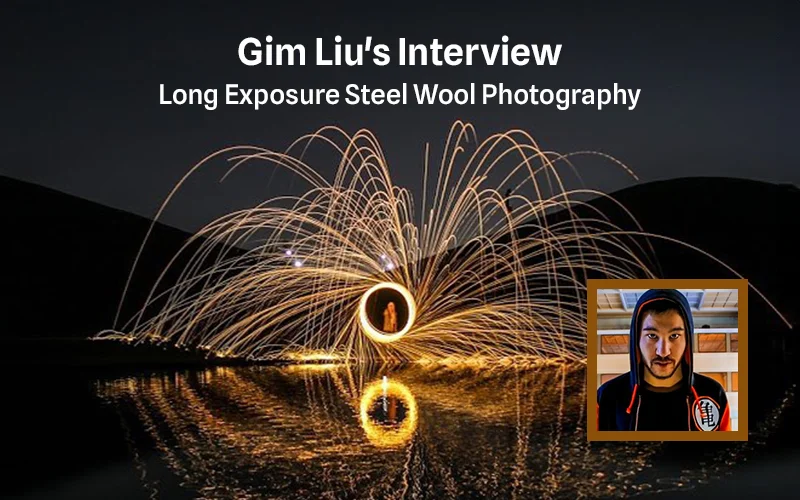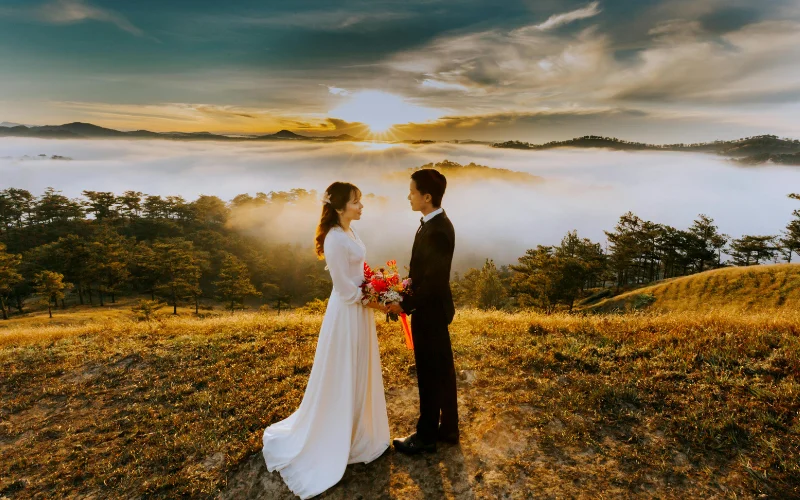Ice and cold, endless winters, white as far as the eye can see, and all the while, quiet and hardly any sun. These are some of the first physical descriptions one can make of the images of Mikko Lagerstedt of the lands around his home of Finland. But there are other qualities worth remarking on. Qualities that go beyond what the eye can see. Things like the emotional swings felt by imagining yourself in these winter nights.
You get the feeling that being alone to the winds and your thoughts could not possibly be a bad thing. There is something inviolable about ice and dark. I can imagine being alone out there — or just simply staring at these photographs — and thinking I’m at the bottom of the world, but higher than anything else, and closer to the wonderful stars above. I can’t help but feel comforted by the beauty of the images of Mikko Lagerstedt.
In this interview, Mikko Lagerstedt talks about how he got his start in landscape photography, explains how Mikko Lagerstedt works in low-light conditions, and reveals his most important techniques for capturing beautiful nightscapes.
Your work about Finland is great. How did you get your start in photography? How would you describe your work?
I first started photography in December, 2008 when I bought my first DSLR – camera Nikon D90. The first inspiration towards photography was about a year before that. When I saw this beautiful field of fog and sunrays through the forest while I was driving to a relative’s cabin. I stopped the car and was blown away by this magical sight that nature gave us. I knew that this was something I wanted to start capture. I would describe my work as mysterious and atmospheric fine art photography.
I like that your landscape work is gloomy and that most of your images are sparse. Why do you think you prefer shooting a landscape in this way?
I love simple and wide views in a landscape. There is something that pulls me into these kind of sceneries. I find it interesting to show a simplistic view with a single subject.
Edge is a wonderful set. It’s filled with majestic timelapses of cold, distant places. What were the most troubling aspects about photographing these landscapes?
Cold is the only thing that comes to my mind. And when you get the shot you were looking for, the warm feeling inside helps you forget the cold temperature.
You captured the night sky really well. What techniques helped you get the most of the night sky?
I first started by experimenting in the dark. I bought a tripod and a remote controller. I tried different exposures and finally used high ISO to pull in more light. I found that it is really fascinating to take pictures in the dark, because you cannot always know how the image will turn up.
They were shot in low light situations. What are the three most important lessons you could share with other landscape photographers about shooting in these conditions?
Use manual focusing to infinity. Use wide aperture and long exposure with wide angle lens and high ISO. Example settings for a full frame camera: 14mm f/2.8, 30 seconds and ISO 1600-6400.
Night Animals is fascinating. I didn’t realize how big an Emu was until I saw it photographed in your project. Could you explain how you came up with this idea? What was your approach to working with animals?
This was actually a fun series for me. I created these images by using two of my photos and then added the pieces together into one dreamy photo. I photographed most of the animals in the Korkeasaari Zoo. The backgrounds were photographed in Old Town Porvoo. It was so dreamy to walk there as the fog was so thick and those streetlights looked beautiful. However as I was there, I realised that there were no subjects to photograph, until I captured a cat under a tree there, which gave me the inspiration to create this series. That Emu, might have been slightly smaller, but I find it interesting to give it a bit more of the dreamy feel to see it as big as in the final image.
Your work also features great post-processing. Could you give us a quick breakdown of your post-processing workflow?
I use Lightroom 5 mostly for my work. I start with an idea to how I want an photograph to feel like. After experimenting with Lightroom I open up the image in Photoshop CS 6 and make the final adjustments, like curves and sharpening.
Be sure to check out all the work of Mikko Lagerstedt on his website and blog.

